8 Best Backend Frameworks in 2021-22
Backend frameworks play a pivotal role in application development for countless businesses across the world. However, finding the right framework for a particular project can be quite challenging.
Especially due to the myriad options available as the most popular backend frameworks. So, how do we go about it? Let’s find out!
Even if you are a newbie in web development, the least you would know is that web development is majorly classified into two facets: frontend development and backend development.
And obviously, they both have their respective sets of tools, technologies, and website frameworks.
This article will help you navigate your way around backend web development and understand its relation to frontend development.
For good measure, we’ve even thrown in some of the most popular backend frameworks to help you narrow down your options.
Backend vs Frontend Development
Before getting started, let’s first understand the differences between the backend and the frontend. This is relevant, especially if you are new to the world of web development.
Before diving deep into the list of the most popular backend frameworks here’s a quick primer on what frontend development and backend development mean:
Frontend Development
In simple terms, the frontend is the visual part of a web app. It is what users see and interact with.
Your UI UX design implementation plays a key role here. The most popular website frameworks for frontend development are HTML, CSS, and JavaScript.
The primary focus here is to create a great user experience and ensure that the layout and the design of the web app are cohesive throughout.
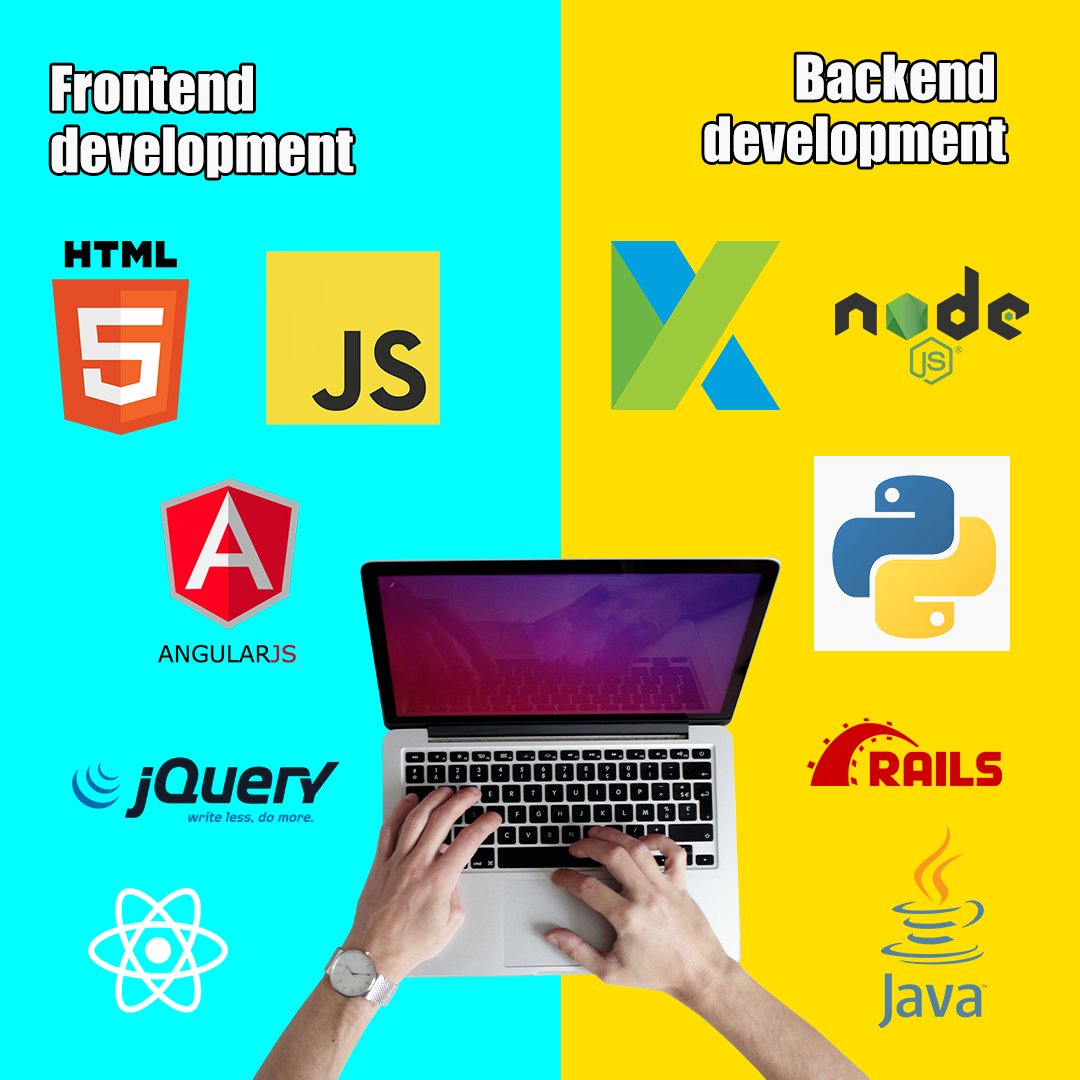
Backend Development
on the flip side, backend development is everything that happens behind the scenes on the server.
That is why backend frameworks are also known as server-side frameworks. Although users do not interact with backend components directly, they are extremely important for everything to work just right.
Backend developers are responsible for the implementation of database systems, generating backend functionality and ensuring proper communication between different web services.
Do All Web Apps Need a Backend?
The need for a backend entirely depends on the features and functionalities you’re trying to implement into your application.
If you only wish to display preset static data, then just having a frontend will do. However, if you want it to display dynamic or user-specific content or authenticate users before letting them access its features, then you definitely need backend tools.
So, how do backend frameworks feature in all this? Let’s find out!
What Is a Backend Framework?
Backend frameworks are libraries of backend (server-side) programming languages that enable the construction of the backend structure of a site.
They offer ready-made solutions to build a dynamic app or website. They provide developers with an advantage by eliminating the need to build and configure everything from scratch. This way, developers can thus focus on the more important features they want to implement and quickly get things done.
Probably. This answer from StackOverFlow lucidly explains what frameworks are.
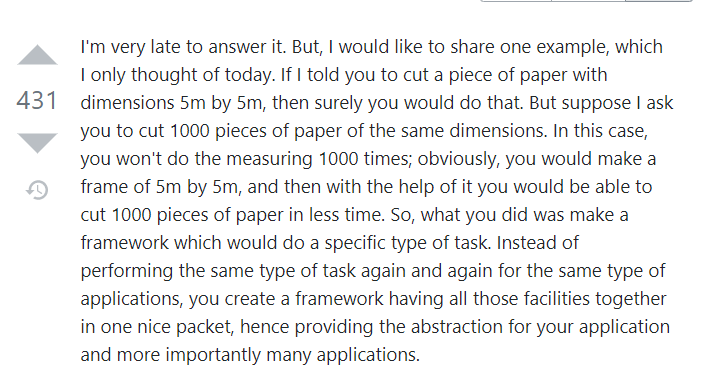
Although they all serve the same purpose, most backend frameworks are written in multiple languages and offer different features. The choice of language and whether a particular framework can support the features you’re trying to implement will decide your choice of framework.
Backend web frameworks help developers to make applications in a quick and systematized way. They have readily available modules and tools that enable developers to build the basic flow and architecture of the application. It eliminates the need to develop and configure everything from scratch. In simple terms, frameworks help you focus on writing your app without needing to reinvent the wheel.
In 2021, backend development will be even more crucial as companies look to expand at a rapid pace.
Therefore, here we share the 5 best backend frameworks for web development that will rule the industry in 2021 and the coming years.
Let’s get the ball rolling!
8 Best Backend Frameworks for Web Development
1. Django
Django is a high-level open source backend framework based on the Python programming language. Python web development with Django framework facilitates rapid development of secure and maintainable websites. It follows a "batteries-included" philosophy meaning, all the functionalities that developers need to build web applications should come with the framework as opposed to separate libraries.
This means that as all the essentials to build an application or prototype are available within an umbrella package, developers need not spend much time customizing the framework. When the need for an additional feature arises, Django has more than 4000 packages comprising debugging, profiling, and testing.
It is based on the DRY (Don’t Repeat Yourself) philosophy indicating that developers can reuse existing code and focus on the unique one rather than reinventing the wheel over and over again. It takes a project to market in a swift way compared to other website frameworks.
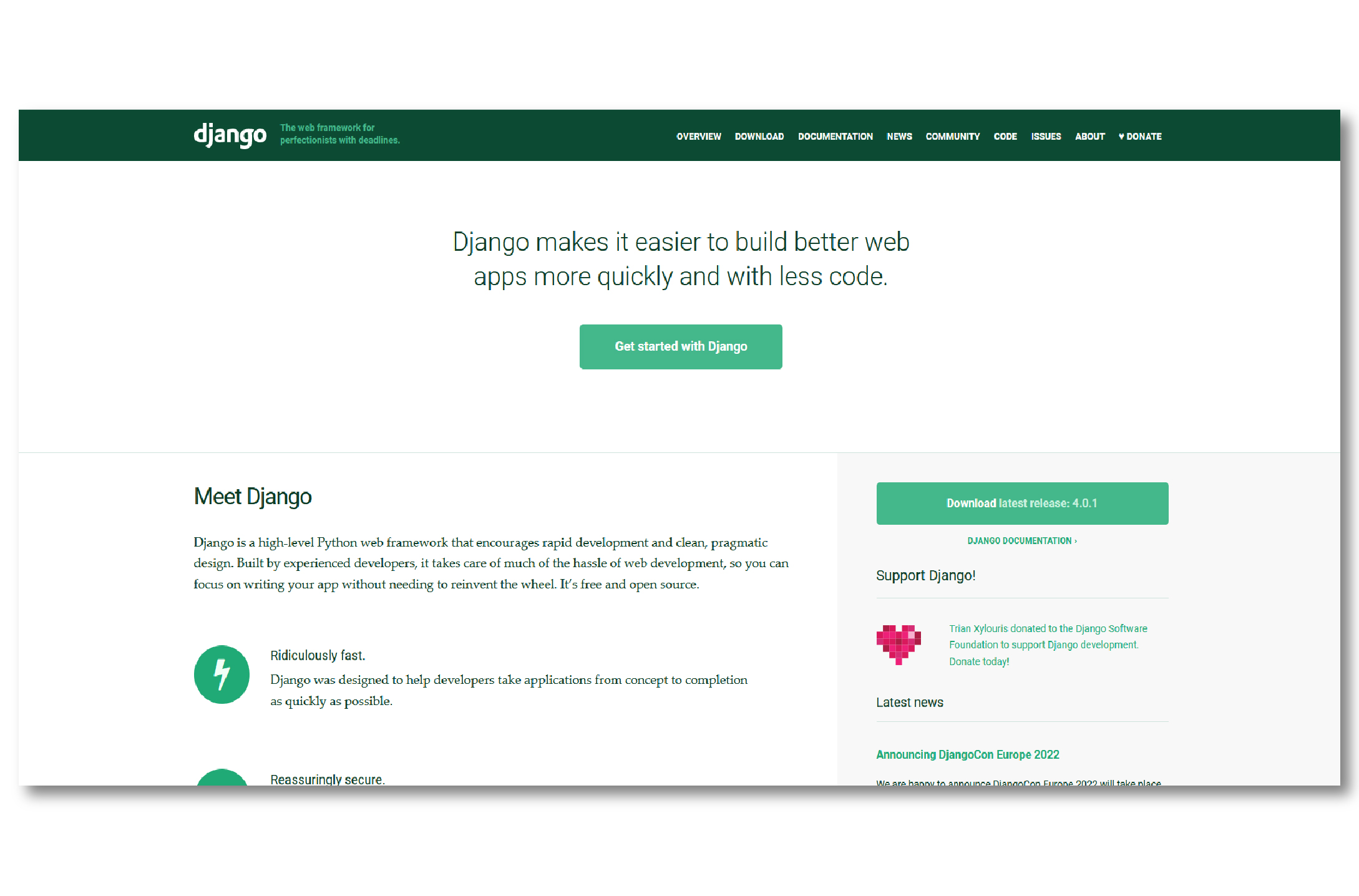
Django is suitable for both simple and high-load web applications. The ease with which you can use this backend framework with Artificial Intelligence (AI), machine learning, and data analytics makes it an ideal choice for math-heavy industries like FinTech, and database-driven, interactive web applications.
Django backend framework ensures simplicity, flexibility, security, reliability, and scalability besides guaranteeing rapid development and clean, pragmatic design.
The eminent websites created using Django Python are Mozilla, The Washington Times, Pinterest, National Geographic, Disqus, Coursera, etc.
2. Laravel
Lavarel is an open-source cross-platform PHP web framework. It has a huge library of pre-programmed functionality (such as authentication, routing, HTML templates, etc. to enable developers to build high-performing web applications swiftly with minimum code.
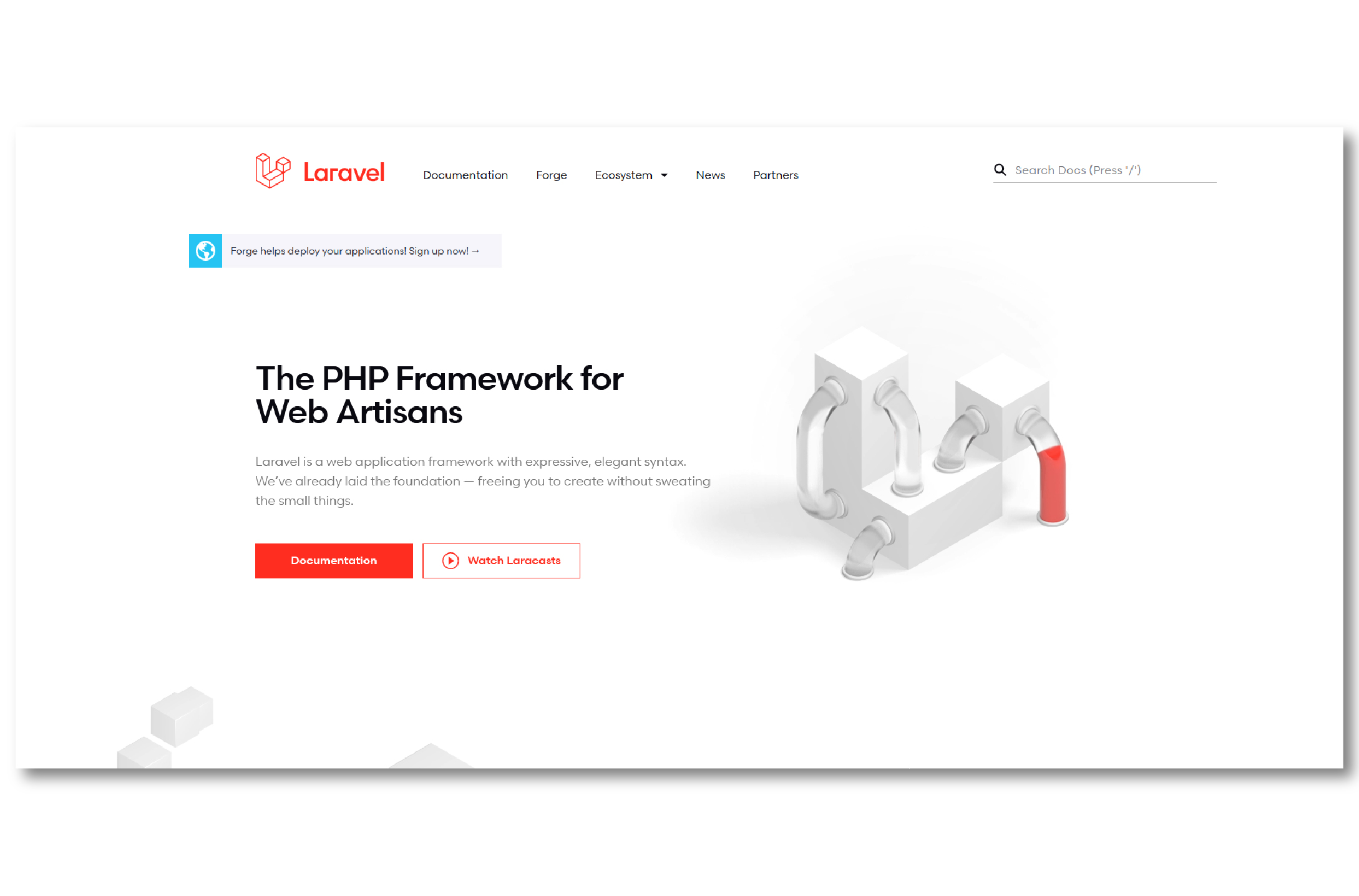
Laravel facilitates the development of Symfony-based web applications that follow the Model-View-Controller (MVC) architectural pattern. It helps in dividing developer roles resulting in a relaxing development process. To be precise. If the frontend developer is working on the views, the backend developer can focus on controller logic concurrently.
The use of object-relational mapping (ORM) permits simpler data access and manipulation. Just like its programming language PHP, Laravel also supports microservices architecture.
With pre-defined architecture and customised back-end logic. Laravel backend framework is a preferred choice among many web app developers. It offers easy-to-maintain codebases and therefore remains highly scalable. Its modular packaging system and robust dependency management helps developers to effortlessly add new features and functionalities.
The eminent web apps created using Laravel are October CMS, Studio Stomp, Koel, MyRank, Startupsco, Fantasy Football, etc.
3. Flask
Flask is a micro web framework using Python programming language. It is classified as a microframework as there is no requisite for any specific libraries or tools. It has no form validation, database abstraction layer, or other mechanisms where third-party libraries give common purposes. It has a built-in development server and a fast debugger.
Flask backend framework is more unambiguous than Django framework and is easier to learn thanks to the less base code to implement a simple web application. It is more lightweight than Django and hence more suitable for small projects. It supports secure cookies. It offers Jinja2 templating, RESTful request dispatching, and built-in support for unit testing.
Flask supports extensions that can add features for a well-built dynamic web application in such a style it gives a feeling that these features and utilities are implemented within Flask.
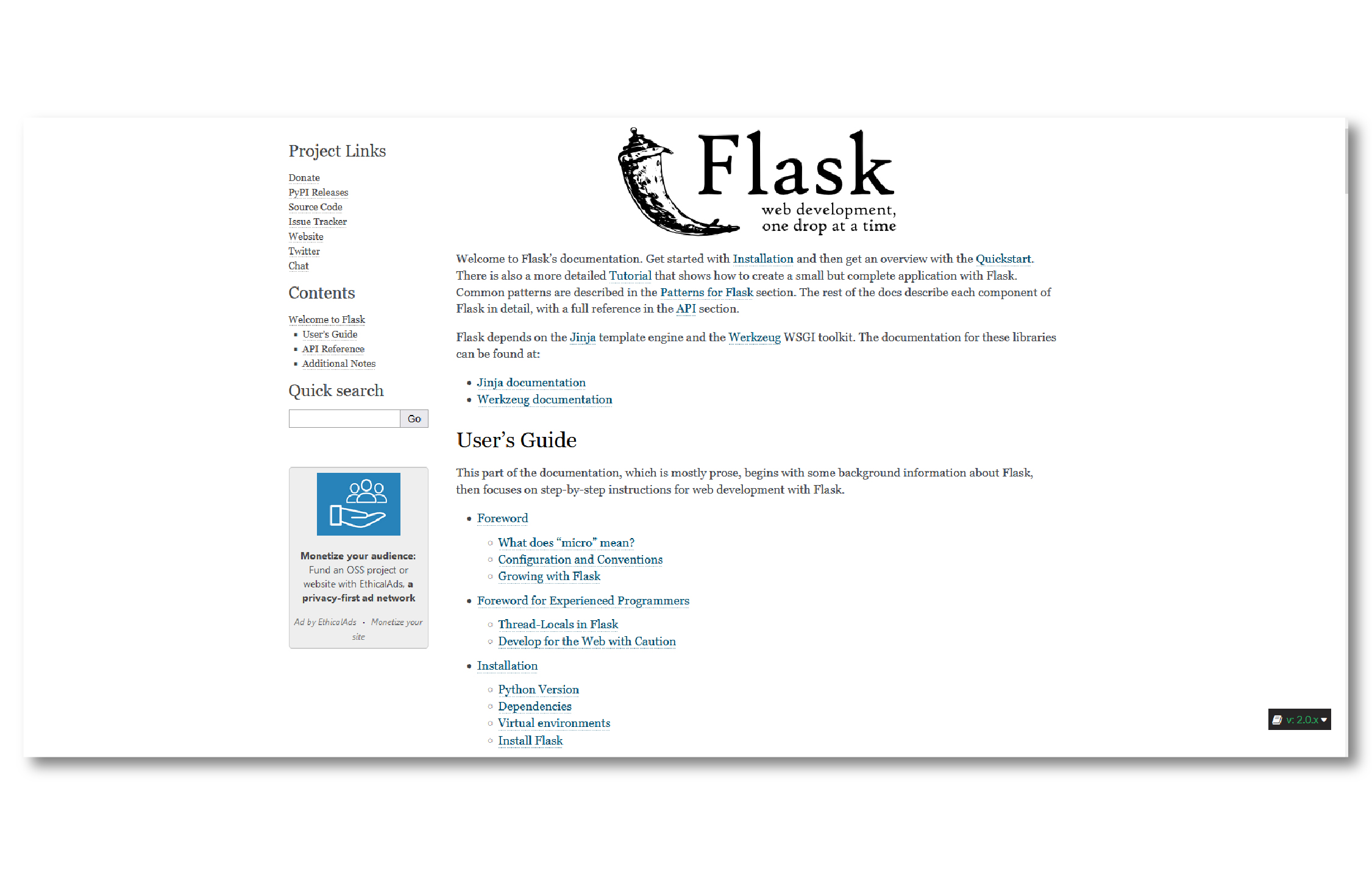
The eminent web apps created using Flask as their backend frameworks are LinkedIn and Pinterest.
4. Ruby on Rails
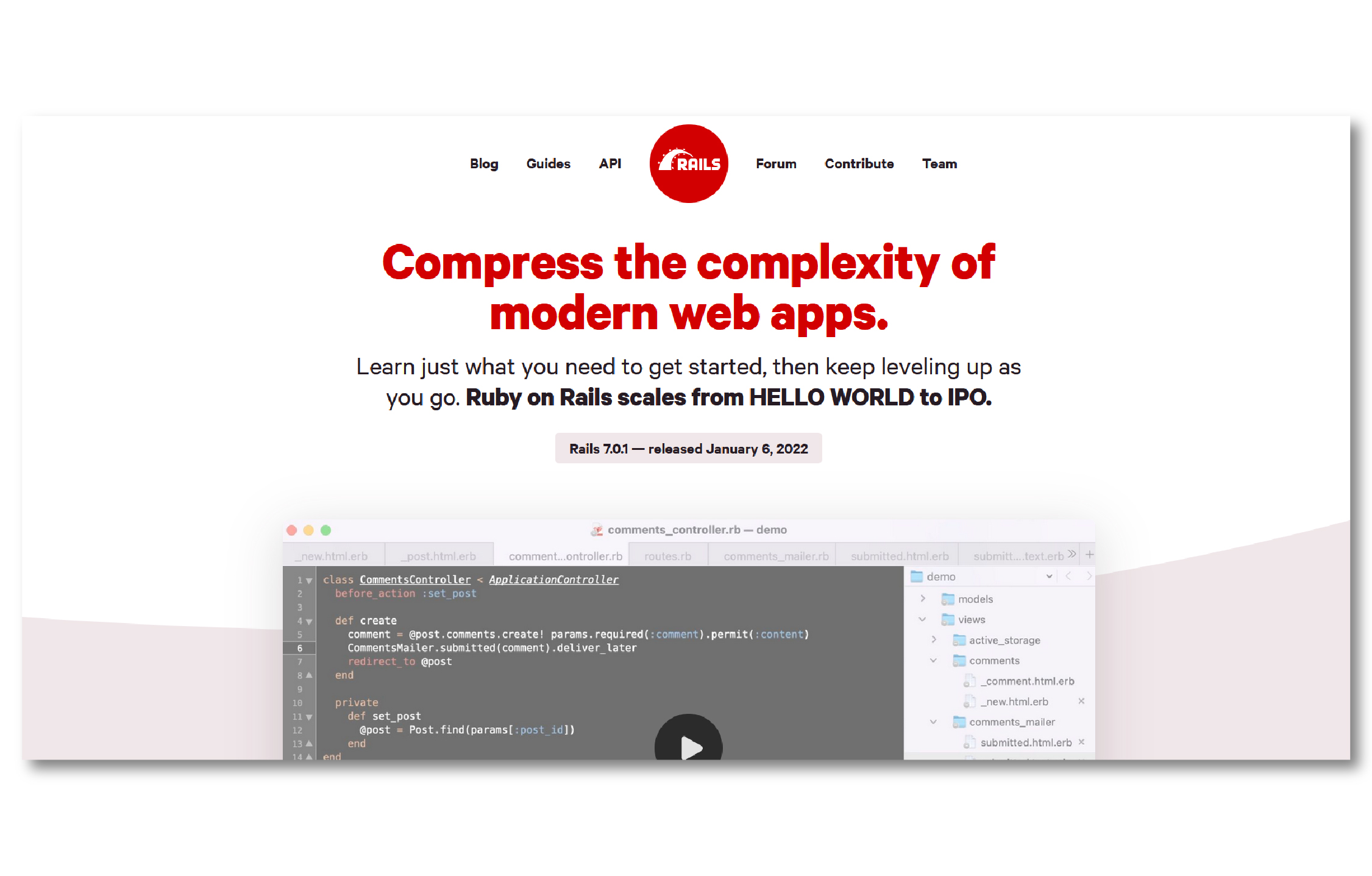
RoR or Ruby on Rails is a popular website framework for backend development written in the Ruby language which is available under the MIT license.
Backed by a vast and friendly community of developers, RoR is an ideal framework that involves everything that a developer needs to create advanced apps.
Since its release in 2004, thousands of apps have been created using the framework, including Airbnb, GitHub, and Hulu, among several others.
Some prominent features of the RoR backend framework include:
- Ruby on Rails emphasizes the principles of No Repetition (DRY) and the Configuration Convention (CoC)
- RoR implements the MVC architecture or the Model-View-Controller architecture
- RoR backend framework simplifies the process of modifying an existing code
- RoR community collaborates diligently to identify and fix new vulnerabilities
Here are some of the pros of this backend development:
- The codes written in RoR are crisp, clear and consistent
- RoR backend framework is one of the most time-efficient programming languages available.
- Comes with a large community of developers
- Hence, if developers face problems, they have a large group for support
- Developers can reuse code to a greater extent which in turn reduces the time required for a web application.
- This backend framework works in Model-View-Control-Format. This means that it is easier to separate the business logic from other application parts.
- The encoding process in RoR is self-describing and easily comprehensible. Therefore, new developers do not need extra documentation to begin a new project.
- Developers can create a prototype of the future website at a faster rate.
- RoR is also considered as a predictable and stable backend framework for web applications.
It is easier for developers to add new features based on new requirements, due to its predictable nature. Also, the framework is ideal for long-term projects and can be used in different types of commercial industries.
5. CakePHP
CakePHP is an open source web app development framework written in PHP. It follows the MVC architecture and is based on the RoR concepts.
It has grown impressively since its inception in 2005 and has now become a modern web tool helping developers to develop apps quickly.
It is an ideal choice for building both big and small web applications. It uses some popular engineering concepts and software designs, such as active record, front controller, convention over configuration, data mapping, active record, etc.
It does not have any complex configuration and ensures total security.
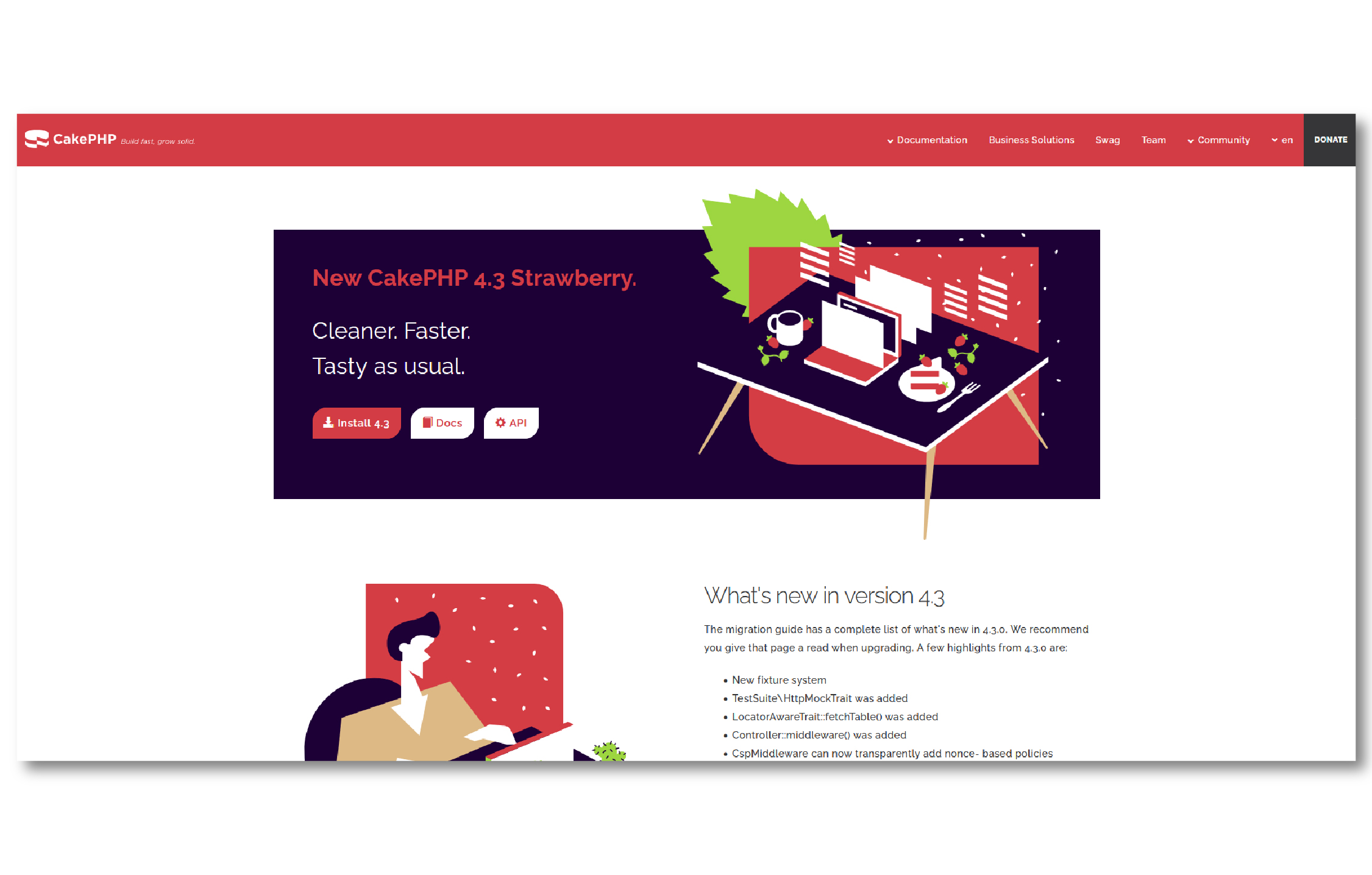
CakePHP has an inbuilt ORM loaded with features. This simplifies the performance of CRUD and database operations. It comes with "batteries included" and permits rapid building of web applications.
The eminent web apps created using CakePHP as their backend frameworks are Orangescrum, Zhen CRM, Croogo, QuickApps, etc.
6. Express
Express.js, or simply Express, is a fast and minimalist Node.js web application framework and open-source software available under the MIT license. It is designed for building web applications and APIs and has been considered as the de facto standard server framework for Node.js. It is the backend section of the MEAN stack, and is considered as one of the best web application development frameworks for building RESTful APIs and web applications.
It offers a fine layer of essential web application features without concealing Node.js features. It has a huge number of plugins, and flaunts an easy setup process. It also has a great routing API.
7. Spring Boot
Spring Boot is a popular backend framework written in Java. It is Java platform’s inversion of control container and Java applications can use the core characteristics of this backend framework.
Spring Boot is highly scalable and helps in creating stand-alone Spring applications. It features great documentation, offers easy dependency management and easily manageable profile-specific properties, and has an extensive eco system. This backend framework is ideal for large scale applications with a cloud approach.
8. Phoenix
Phoenix is a backend web framework for Elixir, a functional programming language. Elixir is built on the Erlang Virtual Machine and hence it works with it. Even though not as popular as object-oriented languages, Elixir is great at building scalable and maintainable applications. Phoenix uses a blend of fool proof technologies with the fresh ideas of functional programming. It uses a server-side MVC pattern. It provides the request/response functionality from the Cowboy server and real-time communication to its external clients through Websockets.
Some other plus factors of the Phoenix backend frameworks are they enable scalable, fast, and reliable web experiences and are known for its fault-tolerant ability. They have great built in database options and own great documentation and active community.
Wrapping Up
So, there you have it – the best backend frameworks for web development in 2021.
As you can see, each programming language has its pros and cons. It completely depends on your requirements and budget as to which framework will be a perfect fit for you. That being said, hopefully, this list of the top and the best backend frameworks gives you some direction as to which one is the most suitable option when you are starting a new project.
The above-mentioned backend programming languages are leading in the industry, and you can pick any of these for your business-level programs.
All you need to do is to get in touch with a reliable software development company and get yourself a great project that fulfills your business requirements.
Meanwhile, if you are interested in exploring the right programming language for DevOps, here it is.
From frontend to backend development and beyond, Bridge Global is here for all your web and mobile application development needs.
We have strong expertise in developing all manner of custom software development projects that include web development, windows application services, and embedded software development for a global clientele over the last 15 years. Contact us today to get started!



I am very ecstatic when I am reading this blog post because it is written in good manner and the writing topic for the blog is excellent. Thanks for sharing valuable information.